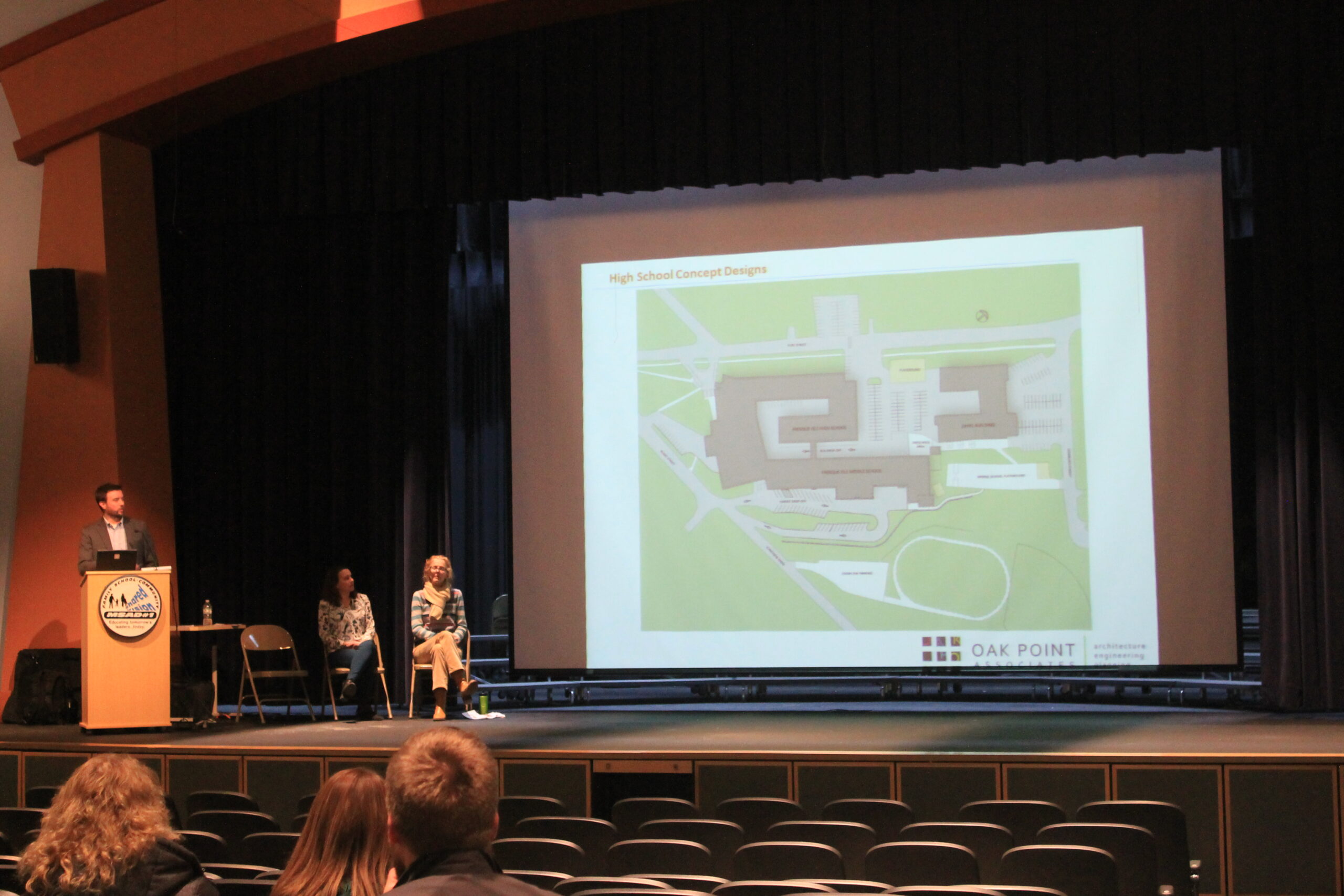
PRESQUE ISLE, Maine — If Maine School Administrative District 1 does not receive state funding for new school construction, district leaders want the public to consider consolidating and reconfiguring Presque Isle’s current schools.
Such a “right-sizing” move could cost $12 million or more under a conceptual plan that’s been developed with the help of an architectural firm. But it also would save money in the long-term and could be one of the district’s best hopes to moderate local tax burdens, according to Clint Deschene, MSAD 1 assistant superintendent for business.
Deschene kicked off a public information meeting Tuesday, Jan. 16, by noting that the district probably will not be awarded any state funding for school construction, since many of the other Maine school districts applying for the funding have school buildings that are in worse shape. The Maine Department of Education will announce in March which school districts are eligible for construction funds.
“We are pragmatic and probably a little on the pessimistic side,” Deschene said. “We’re not expecting them to come through. We’re expecting them to see us as a good applicant, but score us low because our buildings look good. And they’re not going to see the bigger issues that we’re facing. That being said, we’re very open and welcoming to a surprise.”
Those bigger issues include the costs of operating and maintaining aging schools that collectively are running under capacity, following decades of declining student enrollment. Approximately 10 percent of MSAD 1’s annual budget, or $2 million per year, goes to keeping school buildings maintained, powered and heated. Pine Street Elementary, the district’s oldest building, also is in need of a new roof at an estimated cost of about $2 million.
To reduce those operational costs in the long-term and avoid local property tax increases, MSAD 1’s leaders are asking the public to consider a right-sizing plan that would close one Presque Isle school, Pine Street Elementary, while revamping the other three.
The MSAD 1 board’s strategic planning committee endorsed such a plan in concept last year and Deschene has been working with the architectural consulting firm Oak Point Associates to devise a specific proposal, complete with cost estimates and various options.
Under the working proposal, grades pre-K to 5 would be moved to the Skyway Middle School, grades 6 to 12 to Presque Isle High School, and administration and other departments to Zippel Elementary.
The estimated costs for that proposal would be about $12 million, said Oak Point architect Tyler Barter. While the middle school, the district’s newest building, would need relatively minimal changes, the high school would require fairly extensive renovations and additions to meet the needs of the younger grades and modern requirements, such as an elevator for handicapped students, new bathrooms, a science lab, sprinkler systems and additional parking.
If paid for with bonds, Deschene said, a $12 million right-sizing project could save the district money by redirecting maintenance and operating money into more efficient buildings.
But Deschene added that the district needs more feedback from the public to move forward, to ensure there is enough community “buy in.” Such a plan would require approval from both the school board and voters in the five communities. Members of the public can share their comments with district leaders and learn more about the right-sizing process at sad1.org/school-right-sizing/.
The 30-plus people attending the meeting Tuesday raised a variety of questions and concerns, such as the costs of the proposal, potential social problems with housing middle and high schoolers under one roof, and traffic snarls from parents dropping off and picking up their kids.
“There’s language that’s used by the high school kids; they’re using devices that the middle school kids are going to ask why they’re not allowed to use,” said Jacob Graham, a seventh grade math and science teacher.
Others raised concerns about middle and high schoolers sharing a library, the logistics of scheduling school lunches and the ramifications of closing Pine Street, a neighborhood elementary school in the heart of residential Presque Isle.
Deschene said that during the next few months, the administration and consultants will continue to hone the right-sizing plan and its cost estimates, and hold additional public meetings.
“We’re still in the same dilemma we were three years ago,” Deschene said, referring to the start of the right-sizing effort.
“My fear is if we don’t do this, I’m certain this community is not going to like the future of our costs,” Deschene said. Under the status quo, “your quality of maintenance, cleanliness and probably education are going to slightly deteriorate, because the dollar can’t stretch as far.”




